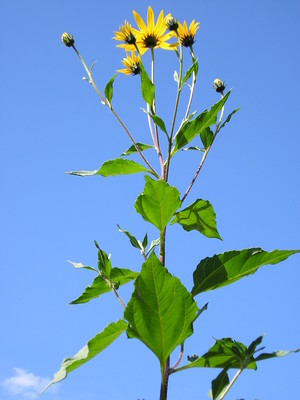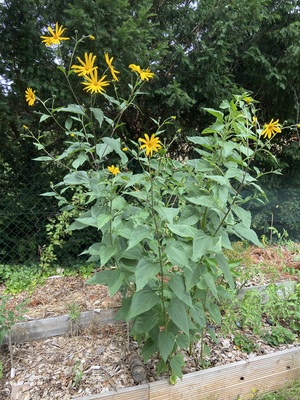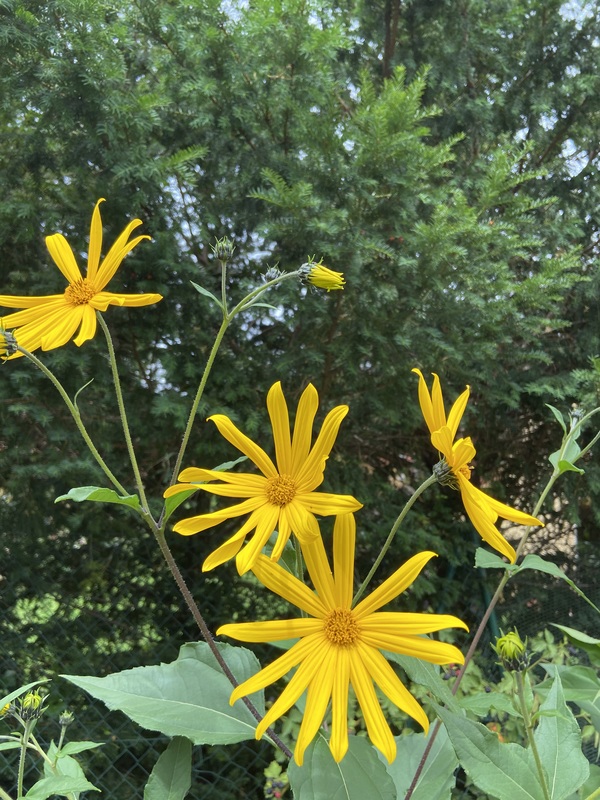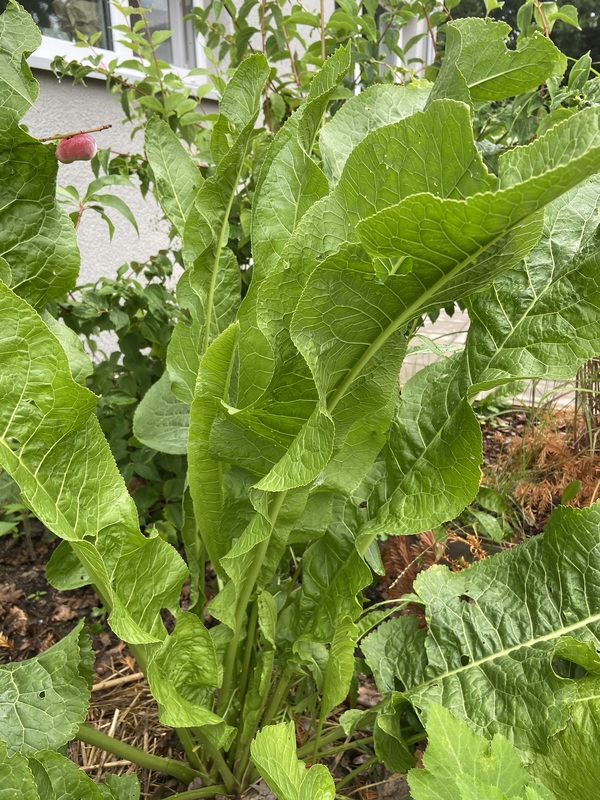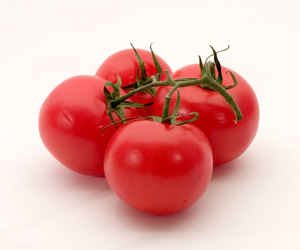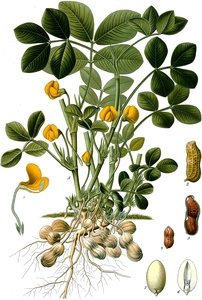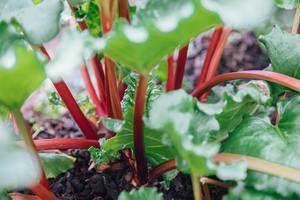Description
The Jerusalem artichoke (Helianthus tuberosus), also knows as “sunchoke”, is a species of sunflower native to the central and eastern United States and eastern Canada. It is a tall, herbaceous plant with yellow flowers and a rough, hairy stem. The plant can grow up to 4-10 feet in height, and its leaves are broad and coarse, with toothed edges. The edible tubers, which are produced in the ground, are similar in appearance to ginger root, with a slightly bumpy, brown skin and a white or pale yellow flesh.
Jerusalem artichokes prefer well-draining, moist soil and full sun, but they can tolerate partial shade. They are hardy in cold climates and can be grown throughout most of the United States and Canada. To cultivate the plant successfully, gardeners and farmers may need to water regularly and provide support for the tall stems. The tubers can be harvested in the fall, after the plant has died back, and can be stored in a cool, dry place for several months. Be conscious of where you plant it, because removal is next to impossible. If even a small section of rhizome is left in the ground, it will grow into a whole new plant.
Jerusalem artichokes are edible and can be eaten raw, cooked, or roasted. The tubers have a sweet, nutty flavor and can be used in a variety of dishes, including soups, stews, and salads. They are also a good source of fiber and contain a high amount of inulin, a type of carbohydrate that is beneficial for maintaining healthy gut bacteria. The tubers are a good replacement diet for the potato for people with diabetes.
In addition to their culinary uses, Jerusalem artichokes can also provide a number of other benefits to gardeners and farmers. The plant is an excellent source of nectar for bees and other pollinators, and its rough, hairy stems can provide shelter and nesting sites for birds and other wildlife.
Propagation
While growing from seed is possible, it is much harder and yields happen to be smaller.
